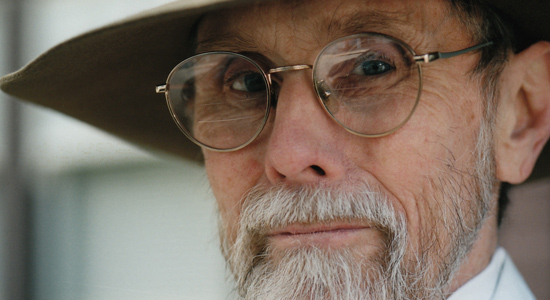Negativland was asked to be guest editor of MAGNET this week, which poses a challenge to such a large collective of members with extremely disparate tastes and obsessions. Members Peter Conheim and Mark Hosler came forward to share what’s been on their minds lately and, indeed, what’s informed their thoughts and work over the years. The group’s new album is entitled It’s All In Your Head and, being entirely about faith, monotheism and why humans believe in God, comes packaged inside of an actual King James Bible. And while religion and intolerance are posing the biggest and toughest dilemmas facing the world today—well, excepting that climate business—Negativland will focus instead this week on such things as sounds, pictures and books. And the impending death of everything due to digital technology.

Peter Conheim: I am not sure where many of us in the various worlds of art, music, collage and film—or art/music/collage/film—would be were it not for Bruce Conner (1933-2008). Conner was adept at all of these disciplines, not to mention painting and sculpture. He pioneered the use of “found footage” in short-form filmmaking. He unwittingly created the “music video” with early shorts of Devo and David Byrne/Brian Eno. He was old enough to be part of the thriving beatnik culture of 1950s San Francisco as well as the thriving punk-rock culture of 1970s San Francisco, and his work cleanly and neatly bridges divides between decades. In 1999, the Walker Art Center mounted the largest retrospective of Conner’s work, encompassing aspects of every discipline he touched. You entered the exhibit viewing his physical “assemblages” from the beginnings of his art and exited somewhere in the midst of his film work, which continued until his death, even after he declared his “retirement.” So, to many, Conner is remembered above all as a “filmmaker,” but this label doesn’t do him full justice. His pen-and-ink drawings alone are stunning to behold: a fine-point fountain pen drawing one continuous, seemingly unending line, around and around and up and down the paper, never breaking. (Conner would only stop to refill his rapidograph pen, then bring the point right back to where he left off to continue moving the line.)
My personal revelation with Conner’s work was seeing his longest film, 1976’s Crossroads. It is a masterpiece of “found-footage” filmmaking, though it is entirely based upon a single image: the detonating of an atomic bomb at the Bikini Atoll in 1946 as the U.S. Army’s “Operation Crossroads” experiment (a 1954 re-run of which would poison and destroy the lives of generations of islanders). Conner was granted access through the Freedom of Information act to scour through and reprint hundreds of different cameras’ silent-film recordings of this single blast, as it was shot from every conceivable angle via land, sea and air. Varying speeds of optical printing bring the explosion to our eyes over and over and over and over again, with new and minute details appearing constantly throughout its 36-minute running time. But the film’s true majesty is its seamless blend of image and sound, even though the “event” itself was only filmed silently. Electronic composer Patrick Gleeson and minimalist maverick Terry Riley each score one-half of the film; Gleeson creates a synthetic soundscape of chirping birds, droning airplane engines, radio transmissions and the “sound” of the bomb itself, all entirely synthesized. Nothing is real. Riley performs a swirling, churning, raga-like piece with organ and tape loops that would later appear in different form on his Descending Moonshine Dervishes LP. Truth, beauty, death and horror all sewn up together in a perfect ribbon. More info here.






